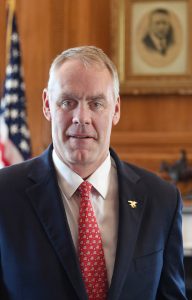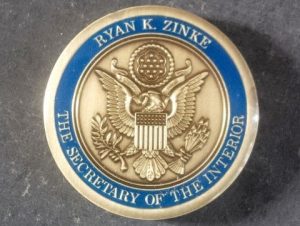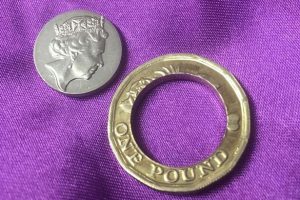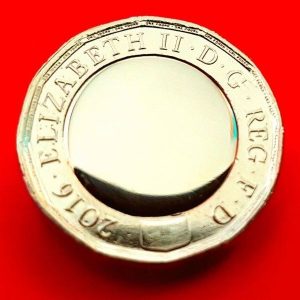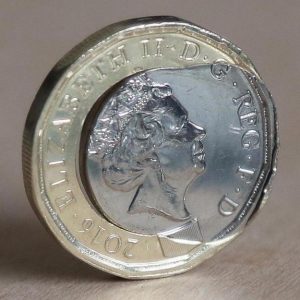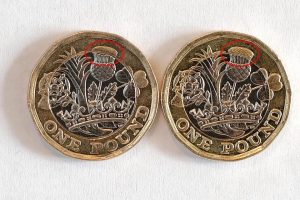POLL: Are you collecting 2021 coins?
U.S. numismatics collectors are different. On one side, there are the collectors of old coins. If the coin was not circulated and made of precious metals, then it is not worth collecting. They look at modern coins as “trinkets” or not worth their time. The rest of us will happily collect modern (post-1964) coins and the new issues by the U.S. Mint.
As an aside, my company sells sets of 50 State Quarters for higher prices than in 2019. Although there is an active market for this material, they sell for less than collectors paid in the 2000s.
Enough people are collecting modern material that the Treasury Inspector General has noticed the problems collectors have experienced with ordering from the U.S. Mint. Modern products are selling out as fast as they are offered, and premiums are rising 100-percent and higher on the secondary market.
For this poll, I am asking if you are collecting the coins produced by the U.S. Mint in 2021, then what are you collecting?
As always, your comments are welcome!
Are you collecting the new releases from the U.S. Mint?
Total Voters: 65
Weekly Numismatic World News for October 15, 2017
British news outlets are reporting that millions of the old round pounds are still in circulation but that might not be bad news for many Britons. There are reports that many coin-operated systems have not been converted to take the new 12-sided £1 coin including supermarkets, where a £1 pound coin is necessary to “rent” a trolley, what the British call their shopping cart.
Two of the U.K.’s largest grocery store chains have announced they will continue to accept the round pound through the end of October because their trolley systems are not ready.
Charities are getting into the act by accepting the old round pound as donations. Many charities will continue to accept the coin through the final redemption period in March 2018 as donations. The charities are working with banks to deposit the coins.
It has been fascinating to read the news of how the U.K. has tried to adapt to the new coin. The biggest issue has been with the use of coin-operated equipment like trolley rentals and parking meters. It is a lesson to any active economy, such as her in the United States, as to what could happen should the composition of U.S. coins change.
Although there have been discussions as to whether to change the composition of United States coinage, it is not likely to happen for many reasons. What may be gaining support is dropping the $1 Federal Reserve Note in favor of a dollar coin. This would not require changes in coin-operated systems but a change in attitudes. Given how resilient Americans can be, it would be possible to end production of the $1 FRN and just endure the kvetching that will ensue. That will end when people get used the coin.
And now the news…
LeRoy Transfield A photo of the New Zealand Expeditionary Force, Native Contingent. Utah sculptor LeRoy Transfield had two uncles who served in the unit during World War I.
The discovery of gold rings and coins on a Swedish island sheds new light on the history of the area, and could give insight into the motives for a massacre which took place in the fifth century, archaeologists told The Local on Wednesday.
Share
People buy gold in various forms like jewellery, coins etc. Here are 7 things to know if you are buying gold coins this Diwali.
The Carl Brashear Foundation wants to bring its namesake’s legacy home to the veterans center that soon will bear his name.
By Katie Lange Defense Media Activity
Shoppers have one day left to spend their old round £1 coins before they cease to become legal tender at midnight. Hundreds of millions of round pounds are yet to be handed in, as only hours remain before the coin drops out of general circulation. However, major banks and building societies have said they will continue to accept the old coins after the deadline on Sunday. They can also be deposited into any of the usual high street banks or through the Post Office.
Sunday, October 15, 2017
Currency modernization will help secure our financial futures and save billions of dollars for taxpayers.
Interior Secretary Zinke has his own Challenge Coin
In an article that appeared in The Washington Post, it was reported that Secretary of the Interior Ryan Zinke has the department fly a special flag on top of the agency’s building in Washington, D.C. when he is in the office. On days Zinke is not in the office, a flag is raised for Deputy Secretary David Bernhardt.
Zinke, the former Montana congressman, is a former Navy SEAL commander and may have adopted this tradition from his time in the service.
Zinke also commissioned personalized challenge coins to give to staff and visitors.
Challenge coins began as a military tradition during World War I when Ivy League students went to war and created these coins as an act of camaraderie. The challenge is that when a member draws his or her challenge coin and slaps it on the table, others must produce their challenge coin. If someone does not have their challenge coin, that person must buy a round of drinks for the group.Typically, a challenge coin is a small medal, usually no larger than 2-inches in diameter, with the insignia or emblem of the organization. Two-sided challenge coins may have the emblem of the service on the front and the back has the emblem of the division or other representative services. Challenge coins are traditionally given by a commander in recognition of special achievement or can be exchanged as recognition for visiting an organization.
Receiving a challenge coin, especially from a high ranking official is supposed to be considered an honor.
Over the last 15 years, challenge coins became popular outside of the military as retired service members began to work in other areas of the government. The tradition has even been adopted by state and local governments and sometimes used to help raise money for municipal projects.
While most agencies have challenge coins, Zinke may be the only secretary to have one personalized. There was no report on the cost of the coins to taxpayers.
Although having a personalized challenge coin along with his flag ritual is unusual for a Cabinet-level official, there appears nothing wrong with him doing this. Zinke appears to have enthusiastically embraced his job at the Department of the Interior and if he uses the challenge coin to help reward department employees, then this is a good move on his part.
- Official portrait of Secretary Zinke courtesy of the Department of the Interior.
- Zinke Challenge Coin image courtesy of The Washington Post.
As round pound winds down the number of fake errors are rising
 As the British are winding down the use of the Round Pound, stories are once again popping up about errors of the new 12-sided pound coin being sold for high prices on eBay.
As the British are winding down the use of the Round Pound, stories are once again popping up about errors of the new 12-sided pound coin being sold for high prices on eBay.
Although the Royal Mint has admitted to manufacturing issues in trying to produce enough new pound coins to satisfy circulation requirements, their claim that the number of errors where the center are missing of the bi-metallic coins is likely post-minting errors.
In other words, they are suggesting that people are removing the centers of the coin to claim they are errors.To better understand why it is being claimed these are post-mint errors, I contacted a European-based dealer who has relationships with many of the continent’s mints. What follows is a summary of his explanation.
The Royal Mint coins money in a process similar to any other mint. Planchets are prepared, sent the coining press, stamped, dumped into a hopper, and sent down a conveyor where they are bagged. The bags are weight to a precise weight before the bags are accepted. Along the way, there are cameras and other sensors to detect errors.
All of the checks and sensors, including the weight of the coin, would be caught long before reaching the bagging section. Aside from the dimensions not being correct, the weight of the ring or center by themselves would not be up to the standard.
It is possible that the coins could separate in the bags during transport. However, these coins are transported to government authorized handlers. Some of them are similar to the companies that drive armored trucks here in the United States. They take the coins and prepare them for delivery to the banks.
The preparation process requires coins to be counted, rolled, and bagged. As part of the process, the coins are loaded into a system that transfers them to an automated line that brings the coins by conveyor to a machine that will either roll them or dump them in a bag. In both cases, the contents are limited by the amount they hold.
As part of the automated system, the coins are counted and check for size and weight so that if there are any coins that do not meet the Royal Mint’s standards are removed. The automated system would catch the ring and the center if they separated before the process.
Coins that are to be rolled are sent to a machine to roll them where they are counted and placed in rolls of £25 each. Those rolls are for bank and retail use and handled accordingly.
Bagged coins are used by bulk handlers such as the coin-op industry. Bags with £100 of coins are counted before being placed in the bag. If the coin cannot be verified before it is placed in the bag then the coin is rejected.
Is it possible for the coin to separate in the £100 pound bag prior to circulation? Of course, it is. However, there is one more check before the coins reach the consumer, and that is the coin-op machine itself.
Coin-op machines have mechanisms to try to prevent accepting counterfeit money and to ensure it is giving the proper change. Machines just do not eject any coin in its hopper. These checks include the weight, dimensions, and magnetic signature. The magnetic signature measures what happens after magnetic energy is flashed on the coin. Think about it as measuring how the coin would reflect light but use magnetism instead.
A pound coin that had separated would not pass the magnetic signature test and be rejected.
Although there are a number of points along the process that could fail, the number of checks between the Royal Mint and the consumer, it is highly unlikely that all of these separated pound coins exist.
It is possible that the coins being sold are from the reject bins of coin-op machines. However, the dealer I spoke with is suspicious of the number of coins being sold.
This dealer told me that he will not buy 12-sided pound coins dated 2016 without their centers. Technically, they are not coins because they originally did not have the portrait of Queen Elizabeth on the front. Under British law, all legal tender coins must have the image of the monarch on the front. In 2016, the Royal Mint created about 2000 of these 12-sided test slugs for businesses to test coin-op systems ahead of the conversion. The dealer community has serious doubts that the test slugs had these errors and believes that people separated the centers from the rings.My dealer contact said that nobody should pay more than “three-and-a-half quid” (£3.50 or $4.64 at the current exchange rate) for just a 12-sided pound outer ring. Even if it is not a legitimate Royal Mint error it is a nice conversation piece.
Examples of legitimate 12-sided £1 coin errors
- Too hard of a strike is likely to have caused the copper-nickel center to melt across the coin.
- First new £1 coin error found with missing detail on the thistle
- Ebay image courtesy of the Daily Express.
- Altered coin image courtesy of AOL (UK) Money.
- Error images courtesy of The Sun.
U.S. Mint announces WWI Centennial Commemorative Design winner
The winning design was submitted by LeRoy Transfield, a sculptor from Orem, Utah.
In an interview that appeared in the Desert News, Transfield said that he had two uncles that served as members of the New Zealand Expeditionary Force Native Contingent during World War I. This lead to his interest in learning about the history of the war.
- 2018 World War I Centennial Silver Dollar Obverse — “Soldier’s Charge” by LeRoy Transfield
- 2018 World War I Centennial Silver Dollar Reverse — “Poppies in the Wire” by LeRoy Transfield
For the obverse, Transfield titled it “Soldier’s Charge.” In the interview, Transfield said that he “didn’t want him to look like some model in an artist’s studio. I made his nose like it might’ve been broken. I wanted to give him a rugged looking face. … I wanted that feeling of combat”
Transfield said that the reverse was more difficult to for him to design. After several tried he came up with the “Poppies in the Wire”
Poppies are a fitting tribute since their use was inspired by the poem “In Flanders Fields.” The poem was written by Lt. Col. John McCrae, a Canadian physician following the funeral of a friend and fellow soldier who died in battle. It was published in 1915 and first adopted by the American Legion to commemorate the American Soldiers killed in the war. It was later adopted by veterans groups within the British Empire including Canada.
Transfield is originally from New Zealand but moved to the United States to attend BYU-Hawaii. After graduating with a Bachelors of Fine Arts degree, he moved with his wife to Orem where he operates a sculpting studio in his garage.
Based on the line drawing, it appears that this is going to be an excellent design when struck on a 40mm silver planchet. This is one time where it appears that the Citizens Coinage Advisory Committee and the U.S. Commission of Fine Arts got it right in picking the design.
The World War I American Veterans Centennial Commemorative Coin will be issued in 2018. According to the law (Public Law 113-212) , the U.S. Mint is limited to selling no more than 350,000 silver dollars. Each coin will have a $10 surcharge (a maximum of $3.5 million) will be paid to the U.S. Foundation for the Commemoration of the World Wars to assist the World War I Centennial Commission in commemorating the centenary of World War I.
Given the texture in the both the soldier on the front and the poppies on the reverse, it will be interesting to see if the U.S. Mint comes up with an enhanced uncirculated version. It could be extraordinary!
- Image of LeRoy Transfield in his studio courtesy of the Desert News.
- Coin line art images courtesy of the U.S. Mint.
Weekly Numismatic World News for October 8, 2017
Ryder’s biography in the President’s announcement was as follows:
The U.S. Mint has not had a permanent director since Edmund Moy resigned in January 2011. Since Moy’s departure there have been a series of Deputy Directors fulfilling the Director’s role including Rhett Jeppson, who was the last nomination not to be considered by the U.S. Senate. Although the Senate Committee on Banking, Housing and Urban Affairs did held a hearing on Jeppson’s nomination, they failed to bring the nomination to the floor for a vote.
If Ryder’s nomination is confirmed, he will be the 39th Director of the U.S. Mint and the only person to hold the job for two non-consecutive terms.
PN1082: David J. Ryder — Department of the Treasury
Now for the news…
An amateur historian from Devon digging in a farmer's field has told how he found a once-in-a-lifetime hoard of 2000-year-old Roman silver coins – worth up to £200,000. Mike Smale, 35, found the hoard of 600 rare denarii in a farmer's field in Bridport while hunting with his pals from the Southern Detectorists club.
The U.S. Mint is on track for the lowest sales of American Eagle coins in almost a decade. The 2008 financial crisis began a historic ramp up in sales that lasted for years. 20,583,000 silver American Eagles sold that year, more than double the 2007 total of 9,028,036 coins.
The negative sentiment toward gold prevailed on Friday, September 29, the last trading day of the month. Gold futures for November expiration fell 0.3% and closed at $1,282.7 per ounce. The call implied volatility in gold was at 9.7%—the lowest level in September. (Call implied volatility is a measurement of the fluctuations in the price of an asset with respect to the changes in the price of its call option.)
Arizona Gov. Doug Ducey signed a law in May to exempt the sale of U.S. gold coins in the state from capital gains taxes.The measure said taxing a gold coin investment was unfair because the transaction was an exchange of one currency for another. Tax free status would arguably spur investment, but that does not seem to be happening on the large scale.Sales of gold coins in the first nine months of the year shrank to the lowest in a decade, according to new data from the U.S. Mint. Despite preferential tax status in Arizona, investors are choosing the stock market.
The Sussex ambulance driver will face no further action after saying his children found the coins.
The Bangko Sentral ng Pilipinas yesterday said it would penalize people found willfully defacing, mutilating, tearing, burning or destroying currency notes and coins.
Penny-wise and coin foolish: Don’t eliminate 1 cent



